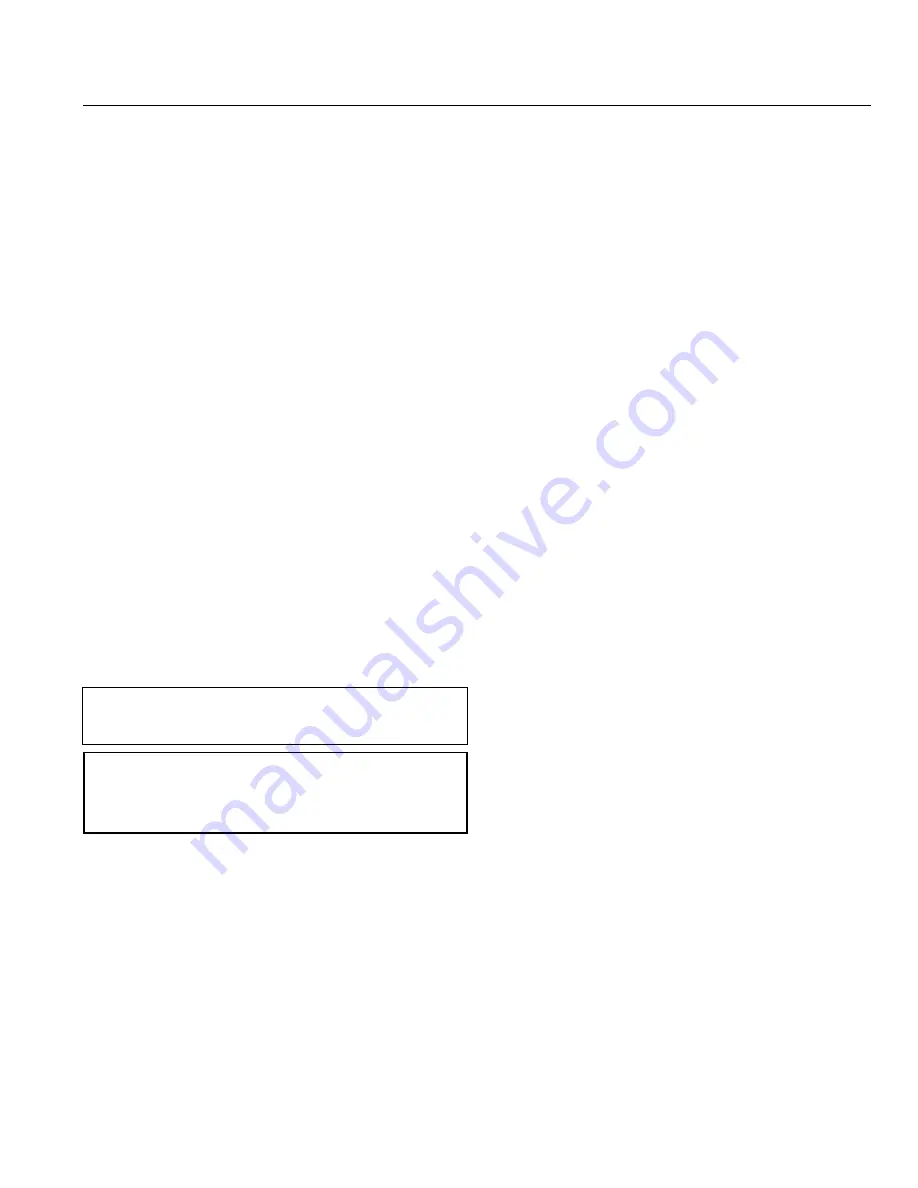
A regular maintenance schedule should be established to
obtain the best service and reliability. Plant operating and
local conditions dictate the frequency of inspections
required.
A permanent record should be kept of all maintenance work.
It will be a valuable reference for subsequent maintenance
work and station operation. Records should include reports
of tests performed, condition of equipment, and repairs and
adjustments.
Maintenance employees must follow all recognized safety
practices, such as those contained in the National Electrical
Safety Code and in company or other safety regulations.
Solid insulation surrounding an energized conductor in
power apparatus must never be relied upon to provide
protection to personnel.
Draw-out structure and connections should be given the
following overall maintenance at least annually. Maintenance
frequency depends on the severity of service and
atmospheric conditions. Equipment subject to highly
repetitive operation may require more frequent
maintenance.
While some of these steps can be done with the device in the
tilt-out position, a complete check can only be made after
removing the device from the rails.
WARNING:
Before attempting any work on draw-out
devices, ensure that all sources of power—primary and
secondary—have been de-energized.
AVERTISSEMENT:
Avant de commencer toute intervention
sur des mécanismes débrochable, vérifier que toutes les
alimentations de puissance, à la fois primaire et
secondaire, sont coupées.
Thoroughly clean the equipment by removing all dust
and other accumulations. Wipe or vacuum clean the
buses and supports. Do not use compressed air for
blowing out equipment.
Inspect buses and/or terminal lug connections for
signs of overheating or weakening of insulating
supports. Check indicating devices and mechanical
and key interlocks for proper functioning. Lubricate
all moving and rubbing parts with a suitable
lubricant, such as Mobil 28 red grease.
Check primary and secondary disconnecting surfaces
for signs of abnormal wear or overheating. If required,
clean contacts with a suitable solvent. Discoloration of
silvered surfaces is not harmful unless atmospheric
conditions cause deposits, such as sulfides, on the
contact surfaces.
Check to see that all anchor bolts and structure bolts
are tight. Inspect all cable or bus connections for signs of
overheating and tighten all loose connections. Check that
all secondary connections are secure and all control
wiring is intact.
After cleaning with the device removed, measure and
record resistances to ground and between phases of
insulation on buses and connections. Since definite
limits cannot be given for satisfactory resistance values,
keep a record of resistance readings so that weakening
of insulation from one maintenance period to the next
can be recognized by comparing readings. Readings
should be taken under similar conditions each time, if
possible, and the record should include temperature
and humidity.
High potential tests are not required, but if it seems
advisable, based on insulation resistance tests or after
repairs, test voltage should not exceed 75% of the
factory test voltage, which is two times the rating plus
1000 volts.
Operate each device in the TEST position to ensure
proper functioning. This is particularly important for
devices that normally remain in either the opened or
closed positions for long periods.
When the equipment is subject to unusual conditions,
such as contaminating fumes and excessive moisture,
schedule maintenance at more frequent intervals. In this
case, this procedure may not be sufficient and
additional precautions may be necessary to protect the
equipment
Lubrication
All the areas subject to friction are liberally coated at the
factory with Mobil 28 red grease. If the contact surfaces, the
device power screw, and the interlock pin are cleaned during
maintenance, coat the primary disconnect contact surfaces,
the threads of the nut or screw, and the interlock pin with
Mobil 28.
Power Break® II Devices
Draw-Out Device Installation
Maintenance Procedures
6
1.
2
.
3
.
4
.
5
.
6
.
7
.




























